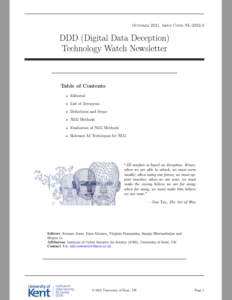Deception has been used since ancient times, for both offensive and defensive purposes. In today’s digital and highly networked world, many deception related activities happen in the cyber space and involve the creation of deceptive data in digital format.
The use of digital data deception (DDD), by adversaries, call for countermeasures which include methods for detection of such deceptive data, as well as defensive deception that can mislead adversaries. The DDD Technology Watch Newsletter project has been established to monitor recent research and innovation progresses in DDD.
This issue focuses on AI-related DDD, covering both offensive and defensive aspects.
This issue focuses on conversational agents or chatbots. Although different definitions exist for these two terms, for the purpose of this newsletter they were used interchangeably.
This issue focuses on deception in different settings: recommender systems, communication from a psychological perspective, and cyber-physical systems.
This issue is the first to have a Chinese addendum NL-2021-3-C (PDF, 3.6 MB) where the scope of the DDD technology watch is extended to research papers published in Chinese.
This issue focuses on a range of topics relevant for DDD: Information Hiding in Images, Fake Software and Services, Data Poisoning in AI Systems, and Vulnerabilities in AI Systems.
The Chinese addendum NL-2021-4-C (PDF, 4.0 MB)
This issue focuses on Attacks in AI Models, Fact-Checking Technology, and Information Hiding (including Steganography Across Different Media, Coverless Steganography, and Steganalysis).
The Chinese addendum NL-2021-5-C (PDF, 4.7 MB)
This issue focuses on deepfake technology in terms of state-of-the-art and state-of-practice; it covers Deepfake Generation, Detection & Prevention, Psychology & Deepfake, Readily Available Deepfake Technology, and Deepfake in the Real World.
The Chinese addendum NL-2022-1-C (PDF, 4.7 MB)
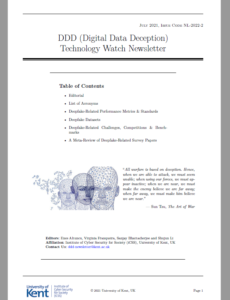
This issue complements the previous one (NL-2022-1) and focuses on deepfake technology. It covers Performance Metrics & Standards, Datasets, and Challenges, Competitions & Benchmarks. It also provides a Meta-Review of Deepfake-Related Survey Papers.
This issue starts a series of three newsletters focused on natural language generation (NLG). It covers NLG methods, evaluation of NLG methods and relevant AI technologies for NLG.
This issue focuses on applications of natural language generation (NLG) in terms of Stylised Text Generation, Conversation and Rewriting and their uses for DDD.
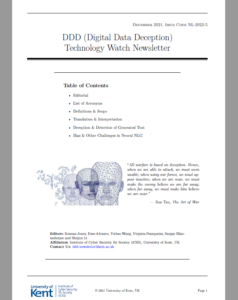
This issue finalises the series of newsletters related to natural language generation (NLG). It covers applications of NLG for Translation & Interpretation, Deception & Detection of Generated Text, and Bias & Other Challenges in Neural NLG.
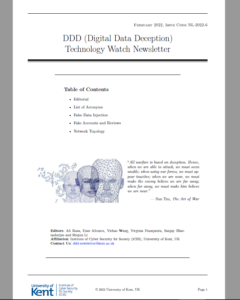
This issue focuses on three themes related to DDD: Fake News, Fake Reviews and Fake Accounts in
terms of detection and mitigation; Fake News, Fake Reviews and Fake Accounts in terms of detection and mitigation; and Network Topology and its use in generating fake topology, and topology obfuscation.
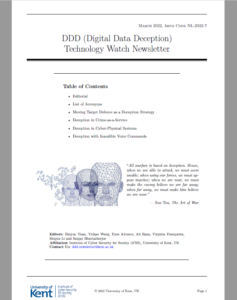
This newsletter focuses on four theses: Moving Target Defence as a Deception Strategy, Deception in Crime-as-a-Service, Deception in Cyber-Physical Systems, and Deception with Inaudible Voice Commands.

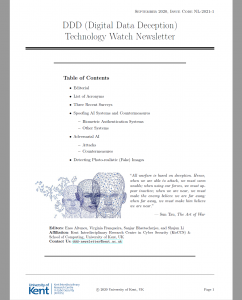 NL-2021-1 (PDF, 9.1 MB)
NL-2021-1 (PDF, 9.1 MB)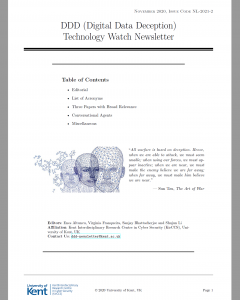 NL-2021-2 (PDF, 2.4 MB)
NL-2021-2 (PDF, 2.4 MB)